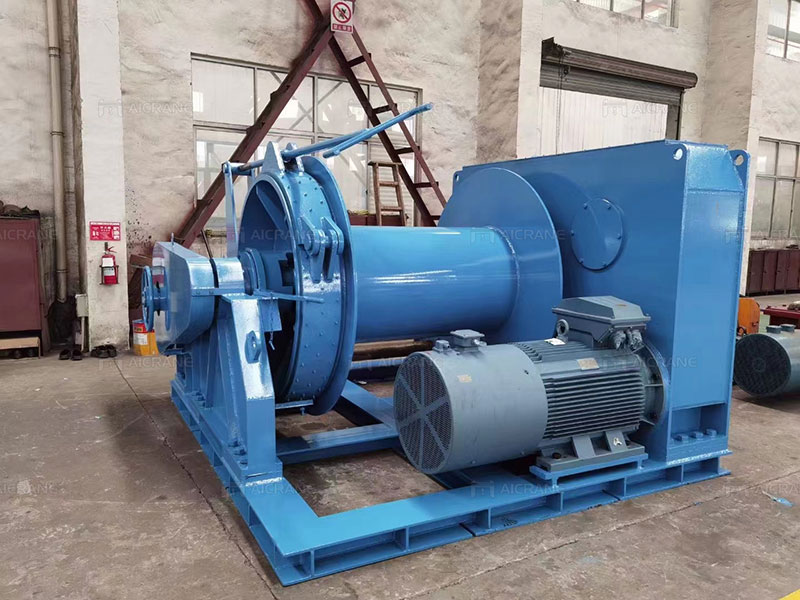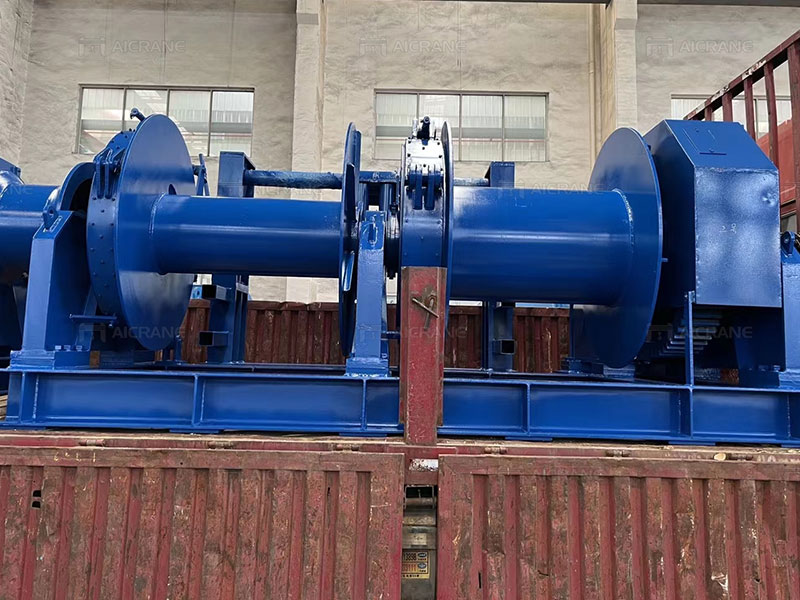Ship winches play a crucial role in maritime operations, facilitating the movement of heavy cargo, anchoring, and towing. However, the improper use of winches can lead to accidents, damage to equipment, and even jeopardize the safety of the crew. To ensure safe and efficient winch operation, it is essential to follow guidelines that cover various aspects of their usage. In this article, we will discuss five key aspects to consider when using ship winches.

Proper Maintenance and Inspection:
Regular maintenance and inspection are vital to ensure the proper functioning of ship winches. This includes checking for any signs of wear, lubricating moving parts, and ensuring that cables or ropes are in good condition. Before each use, inspect the winch thoroughly, looking for loose connections, damaged components, or abnormal sounds. Follow the manufacturer’s guidelines for maintenance intervals and carry out any recommended servicing promptly.
Correct Load Capacity and Balance:
Ship winches are designed with specific load capacities, and it is crucial to operate within those limits. Exceeding the winch’s capacity can cause it to fail, leading to accidents and damage. When loading cargo or applying tension, ensure that the weight is evenly distributed to maintain balance. Uneven loads can strain the winch and compromise its performance, potentially resulting in equipment failure.

Safe Operating Procedures:
Winch operators should be adequately trained and familiar with the specific procedures for safe operation. Ensure that the operator understands how to control the marine winch, including starting, stopping, and reversing. It is important to follow the recommended speed limits and avoid sudden jerks or movements that can put unnecessary strain on the winch and associated equipment. Additionally, the operator should be aware of emergency stop procedures and know how to respond in case of a malfunction or emergency.
Proper Wire Rope or Cable Handling:
The wire rope or cable used with ship winches requires proper handling to maintain its integrity and prevent accidents. Inspect the rope regularly for any signs of wear, such as broken strands or corrosion, and replace it if necessary. When winding or unwinding the rope, ensure that it is properly aligned and does not twist or kink. Improper handling can weaken the rope, leading to failure under load. Use appropriate gloves and protective equipment when handling wire ropes to prevent injuries.
Environmental Considerations:
Environmental factors can significantly impact winch operations. Before using the winch, consider the weather conditions, such as wind, wave height, and visibility. Avoid operating the winch in extreme weather conditions that may compromise safety. Additionally, take precautions when working in areas with high humidity or corrosive environments, as these factors can affect the winch’s performance and lifespan. Regularly inspect and clean the ship mooring winch to remove any accumulated dirt, salt, or other contaminants.
Conclusion:
Ship winches are indispensable tools in maritime operations, but their safe and efficient use requires adherence to guidelines in multiple aspects. By following proper maintenance and inspection routines, ensuring load capacity and balance, practicing safe operating procedures, handling wire ropes correctly, and considering environmental conditions, operators can minimize the risk of accidents, protect valuable equipment, and maintain a safe working environment on board ships. Prioritizing these guidelines will help maximize the lifespan and performance of ship winches, ultimately benefiting the overall efficiency of maritime operations.